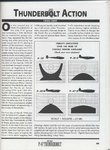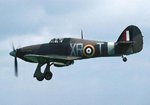Hi Graeme,
>Tried that myself but encountered a few problems. Scale? True flying 'attitide'? and where's my protractor?
Looks good! The flying attitude is not a problem, but we would need to find the sightline depression for each type for an accurate measurement of actual deflection capability. (Though we can do without for pure forward search view). As the sightline depression is measured against the design centre line (which we'd have to find, too), flying attitude doesn't enter the picture.
The flying attitude is not a problem, but we would need to find the sightline depression for each type for an accurate measurement of actual deflection capability. (Though we can do without for pure forward search view). As the sightline depression is measured against the design centre line (which we'd have to find, too), flying attitude doesn't enter the picture.
As it's possible (and common) to elevate the guns slightly above the design centre line to give the best match with the sightline, we can assume that both aircraft can be set up to hit the centre of the reticle at the desired combat distance.
Problems with the forward view: Refraction on the angled armour glass windscreen slightly shifts the sigthline (which would have to start at the sight, by the way And the gun sight body itself provides a visual obstruction, too - I'm not sure if that might influence these two aircraft, but for a two-engined fighter with a stub nose, it certainly would.
And the gun sight body itself provides a visual obstruction, too - I'm not sure if that might influence these two aircraft, but for a two-engined fighter with a stub nose, it certainly would.
Regards,
Henning (HoHun)
>Tried that myself but encountered a few problems. Scale? True flying 'attitide'? and where's my protractor?
Looks good!
As it's possible (and common) to elevate the guns slightly above the design centre line to give the best match with the sightline, we can assume that both aircraft can be set up to hit the centre of the reticle at the desired combat distance.
Problems with the forward view: Refraction on the angled armour glass windscreen slightly shifts the sigthline (which would have to start at the sight, by the way
Regards,
Henning (HoHun)

















